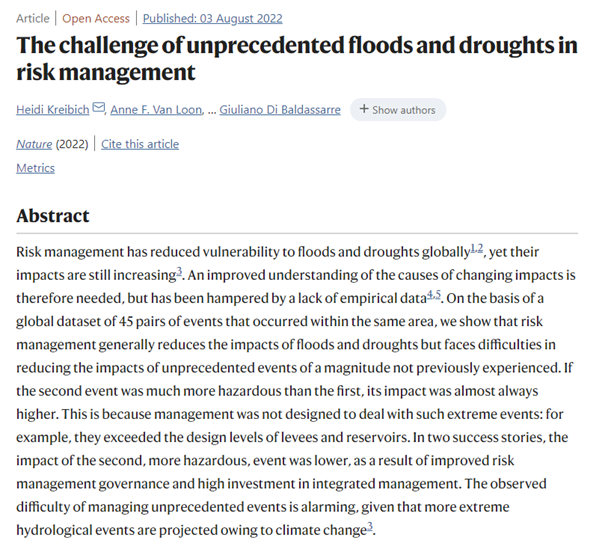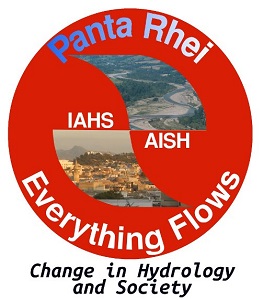IAHS News
Panta Rhei publication in Nature
IAHS would like to draw your attention to the open access publication in Nature lead by Heidi Kreibich, Chair of the Panta Rhei Working Group.
The challenge of unprecedented floods and droughts in risk management
Just because you haven't experienced something, doesn't mean it can't happen. This insight also applies to natural hazards such as floods and droughts. A study published in the renowned scientific journal Nature has shown that gearing risk management measures to the worst-case event experienced to date is not enough to reduce impacts from unprecedented events.
Floods and droughts can cause severe damage and are on the rise in many parts of the world. The impact of such natural hazards can be reduced through appropriate risk management if the causes of the increasing damage are known. However, this has so far been hampered by a lack of empirical data.
A large-scale international collaborative effort by researchers from the International Association of Hydrological Sciences (IAHS), led by Heidi Kreibich of the German Research Centre for Geosciences (GFZ), has now led to important lessons from past events. A unique data set of two successive extreme flood or drought events in the same area was compiled and studied. Regions with large differences in population structure, socio-economic, climatic and hydrological conditions on all continents were studied. The analyses confirmed the assumption that appropriate risk management generally helps to reduce damage.
However, it is particularly difficult to reduce the impact of extreme events whose magnitude has not been seen in the past in the affected area. Heidi Kreibich explains this with two factors. First, infrastructures such as dams and reservoirs have an upper design limit up to which they are effective, but once a threshold is exceeded, they become ineffective. Second, risk management is usually introduced or adjusted reactively after major floods and droughts, while proactive, anticipatory strategies are rare. The reason for this behaviour is partly due to a cognitive bias related to the rarity and previous uniqueness of these extreme events, as well as to the nature of human risk perception: events that one has already experienced oneself are more likely to be expected again in the future.
Two success stories were also examined, in which the damage was less despite a higher hazard in the second event. Three success factors were identified: effective governance of risk and emergency management, high investment in structural and non-structural measures, and improved early warning and real-time control systems. Heidi Kreibich says: "We believe that applying these success factors can counteract the current trend of increasing damage from extreme events under climate change conditions."
https://www.nature.com/articles/s41586-022-04917-5


